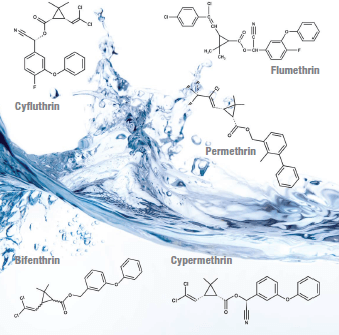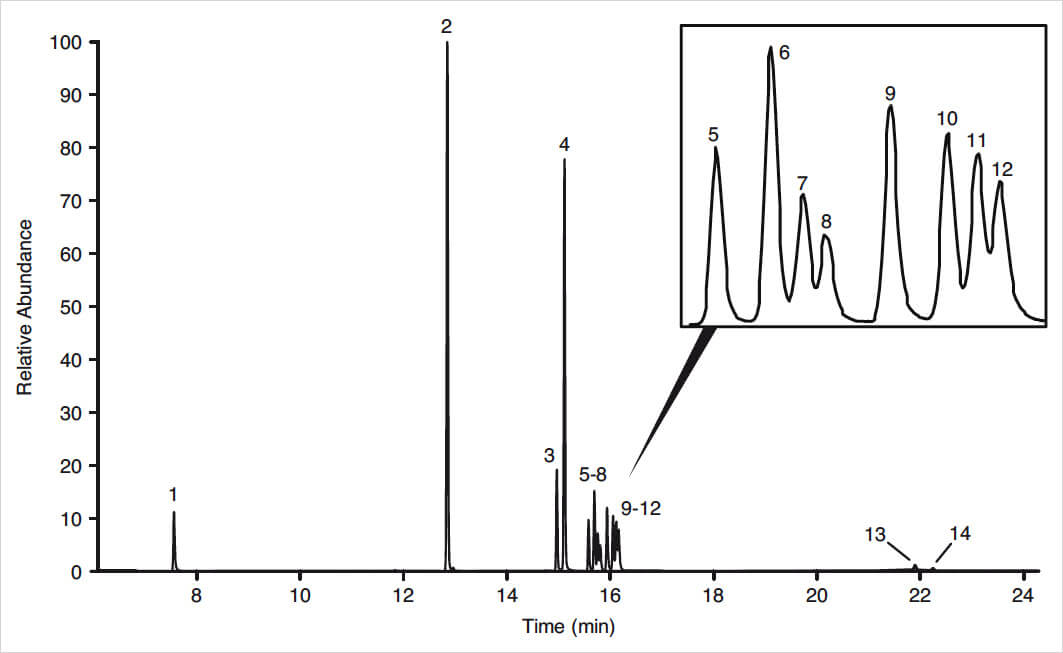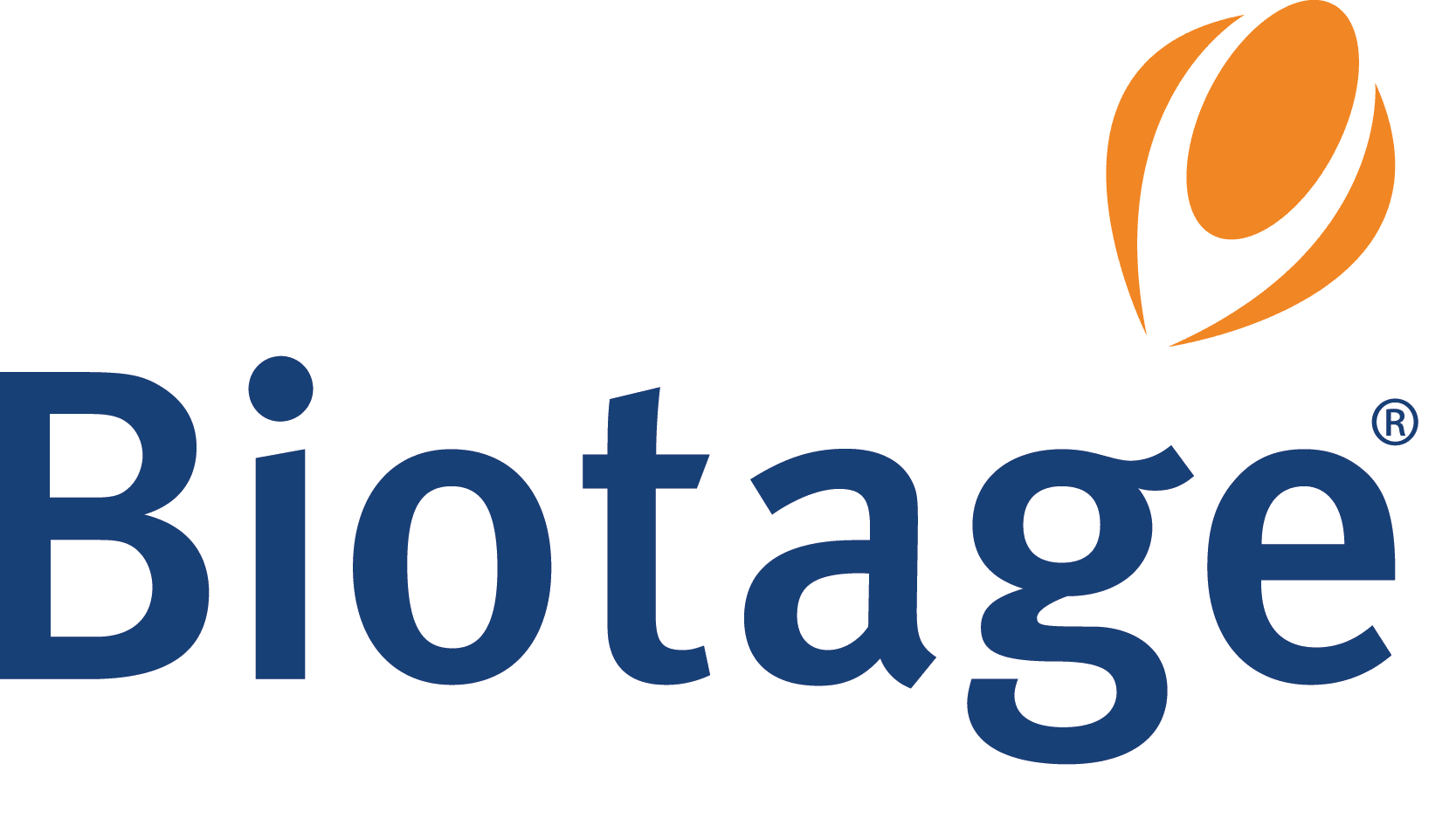Abstract
A method for the determination of pyrethroids in water at ultra-low-level concentrations of 0.02 and 0.10 ng/mL was developed using solid-phase extraction (SPE) for pre-concentration and subsequent analysis by GC with PTV injection. Careful selection of the autosampler vial type was needed to minimize adsorption effects.
Introduction
Pyrethroids are a class of synthetically produced insecticides that are mainly used for domestic purposes to control insects such as mosquitoes. They behave very similarly to natural pyrethrins, which are derived from chrysanthemum flowers and are extremely toxic to fish and aquatic organisms, but have low toxicity towards humans. However, repeated exposure increases the risk of anaphylaxis and allergic reaction at very low concentrations and should be monitored.
In this study, a simple method for isolating pyrethroids from water at low ng/mL levels was performed using solid-phase extraction (SPE) followed by GC/MS utilizing a programmable temperature vaporizer (PTV) operated in simulated on-column injection mode.
The separation of the pyrethroid (bifentrin, permethrin, cyfluthrin, cypermethrin and flumethrin) extracts was carried out using a Thermo ScientificTM TraceGOLDTM TG-5SilMS column and GuardGOLDTM pre-column. The TraceGOLD column is based on a silarylene chemistry, which provides more stability and lower bleed than standard 5% phenyl dimethylpolylsiloxane phase GC columns. This in turn gives rise to better sensitivity due to a lower background signal and can also partially resolve complex mixtures of cyfluthrin and cypermethrin isomers.

The analysis was performed in selected ion monitoring (SIM) mode. Figure 1 shows the total ion chromatogram (TIC) of spiked pyrethroids in water at 0.10 ng/mL after the pre-concentration step. Peak identification is shown in Table 2. To assess method linearity for spiked pyrethroids at 0.02 and 0.10 ng/mL (pre-concentrated to 200 and 1000 ng/mL using SPE), a calibration curve (50–2000 ng/mL) was constructed for each compound using 1,2,3,4-tetrachloronaphthalene as the internal standard (IS). The coefficients of determination (R2) between the area ratios of sample and internal standard for all pyrethroids were greater than 0.99 (Table 3), demonstrating good method linearity.
 Figure 1: SIM chromatogram of 1000 ng/mL of pyrethroid pesticides separated on a TraceGOLD TG-5SilMS column after SPE extraction using a HyperSep C18 SPE cartridge
Figure 1: SIM chromatogram of 1000 ng/mL of pyrethroid pesticides separated on a TraceGOLD TG-5SilMS column after SPE extraction using a HyperSep C18 SPE cartridgeThree extractions of each pyrethroid spiked at two concentrations of 0.02 and 0.10 ng/mL in water were carried out using a HyperSep C18 SPE cartridge. The pyrethroids recoveries were measured to be 71%–111%, with relative standard deviations (RSD) of 4%–22%. See Table 3 for individual pyrethroids measured at each concentration. Analyzing pyrethroids at low concentration levels can be challenging because they adsorb readily onto glass surfaces, such as sample bottles, GC inlet liners and vials. To eliminate the glass adsorption effect, plastic vials were used instead of glass vials with a GC method utilizing a programmable temperature vaporizer (PTV) in simulated on-column mode. The contact time between the solvent and plastic vials was kept to a minimum to avoid introduction of polypropylene extractables into the mass spectrometer. However, studies have also shown that good recovery can be achieved with vials manufactured from high purity clear neutral borosilicate glass. [1,2]
- The SPE-GC/MS method utilizing HyperSep C18 SPE cartridges demonstrated high recovery for synthetic pyrethroids in water at the levels of 0.02 and 0.10 ng/mL.
- The GC/MS method was found to be linear over the range of 50 to 2000 ng/mL.
- Studies showed plastic and high purity, clear, neutral, borosilicate glass vials reduce adsorption of pyrethroids at low concentration.





